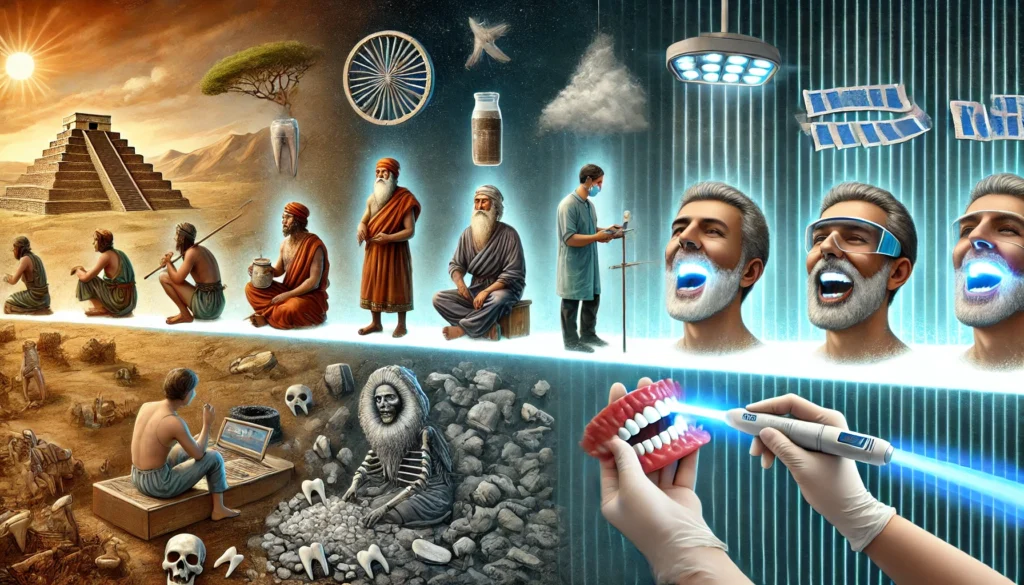
Teeth whitening has significantly progressed over the years, transforming from the basic techniques used by ancient civilizations to the sophisticated technologies we have at our disposal today.
The Evolution Of Teeth Whitening: From Ancient Methods To Modern Technology
This discussion will delve into the journey of teeth whitening, beginning with how early cultures managed to achieve a brighter smile, then moving through the scientific principles that enable this process, and finally examining the modern innovations that have made whitening accessible to everyone. Additionally, it will address the benefits and risks involved, along with tips for maintaining that dazzling grin. Together, let us uncover the secrets to achieving a radiant smile.
The History of Teeth Whitening
The history of teeth whitening is quite a fascinating journey that stretches across centuries, from ancient civilisations using natural ingredients to the modern technological advancements we see in cosmetic dentistry today.
In ancient cultures, people employed various methods to achieve a brighter smile, often turning to herbal remedies and traditional bleaching techniques. In contrast, today’s options include advanced whitening agents such as hydrogen peroxide and bicarbonate of soda, which promise effective results.
Exploring this history not only emphasises the evolution of aesthetic preferences but also illustrates the ongoing quest for improved oral hygiene and dental care practices.
How Did Ancient Civilizations Whiten Their Teeth?
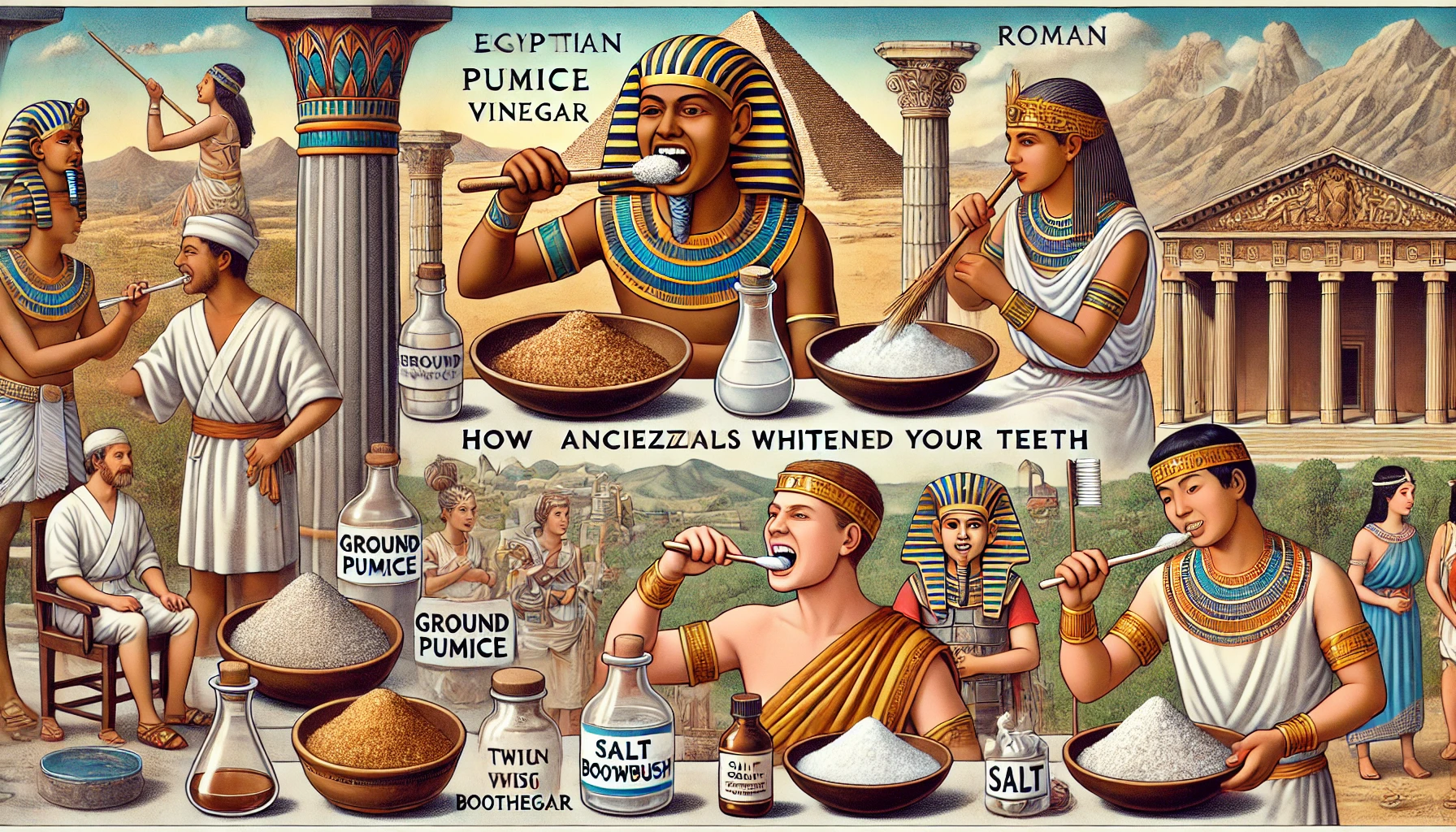
Ancient civilizations utilised a range of fascinating techniques to whiten their teeth, often turning to natural whitening agents such as charcoal, herbs, and even ashes. They believed these substances could improve both their oral health and the aesthetics of their smiles.
For example, the Egyptians favoured crushed stones and various plant materials to create early toothpaste-like mixtures, while the Greeks employed a combination of bicarbonate of soda and salt to keep their teeth bright. They regarded these practices not merely as cosmetic improvements but as vital components of overall health, reinforcing the belief that a bright smile was closely linked to social standing and well-being.
Moreover, ancient cultures often attributed magical properties to certain natural substances, intertwining their dental care practices with spiritual beliefs and rituals. These early remedies ultimately laid the groundwork for the dental hygiene practices that have evolved over the millennia.
What Were Some Early Methods of Teeth Whitening?
Early methods of teeth whitening involved a combination of basic techniques and ingredients that ultimately paved the way for modern cosmetic dentistry practices. For example, the use of bicarbonate of soda and hydrogen peroxide was common in the fight against tooth discolouration.
These rudimentary approaches often relied on natural abrasives and acidic substances. Practitioners experimented with everything from ground charcoal to lemon juice, all in the quest for brighter smiles. While some of these early methods produced only minimal results, they laid the groundwork for contemporary practices by emphasising principles such as surface stain removal and oral hygiene.
The evolution of teeth whitening treatments was driven by a better understanding of enamel health and the significance of maintaining a proper pH balance. This transformation demonstrates how ancient practices have evolved into sophisticated techniques.
This historical perspective continues to inspire innovations in aesthetic dentistry, as dental professionals work to enhance whitening outcomes while prioritising patient safety.
The Science Behind Teeth Whitening
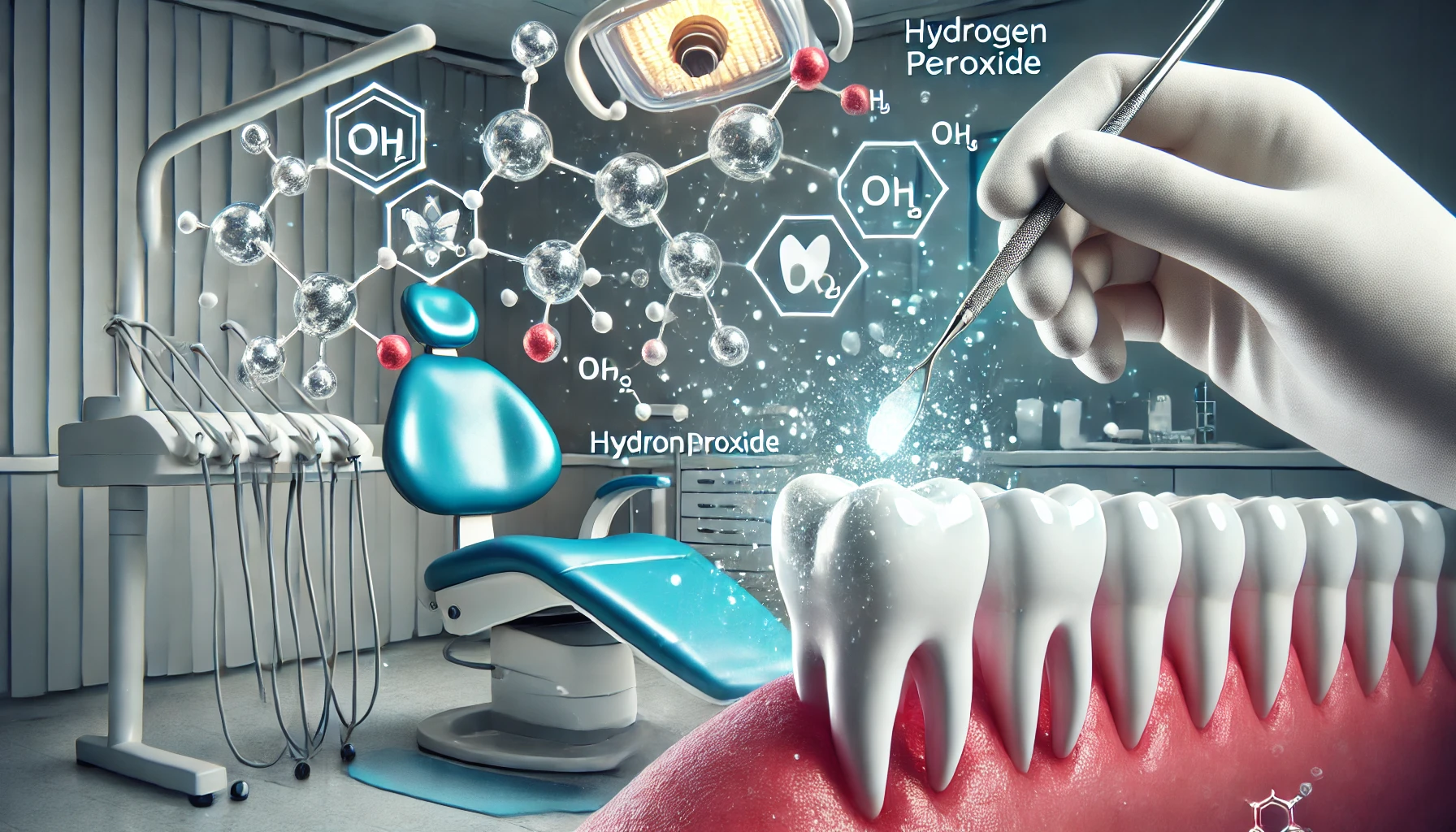
Understanding the science behind teeth whitening involves examining how various whitening agents function to break down stains and discolouration on the enamel, ultimately resulting in a brighter smile.
The most commonly used agents today are peroxide-based products, which effectively penetrate the tooth’s surface to deliver noticeable dental bleaching results.
This scientific basis not only clarifies the mechanics of different whitening procedures but also assists individuals in setting realistic expectations when seeking a brighter smile.
How Does Teeth Whitening Work?
Teeth whitening primarily utilises whitening agents designed to address stains and discolouration, with hydrogen peroxide standing out as one of the most effective and widely used options.
This compound works by penetrating the enamel and breaking down complex stain molecules into smaller, less pigmented particles, resulting in a brighter appearance. While other agents may employ different chemical reactions to facilitate stain removal, they all aim to enhance the aesthetics of the teeth.
Although these methods can be effective in lightening teeth, it is important to recognise the potential risks involved, particularly concerning enamel erosion. Regular use of aggressive whitening agents can lead to thinning enamel, which may increase susceptibility to sensitivity and decay.
Thus, it is essential for individuals to consider their unique dental health and any underlying vulnerabilities before pursuing whitening treatments.
What Are the Different Types of Teeth Whitening?
There are various types of teeth whitening options available today, ranging from professional treatments provided by dental professionals to a variety of home whitening solutions, including whitening strips, gels, and advanced techniques like laser and LED whitening.
Each of these options comes with its own set of benefits and drawbacks, allowing individuals to select what aligns best with their needs and lifestyle.
For example, professional treatments are renowned for their effectiveness and immediate results; however, they can be quite expensive and often require multiple sessions. In contrast, over-the-counter products like whitening strips and gels offer a more accessible alternative, although they may take longer to yield noticeable results and could potentially cause sensitivity.
Laser and LED methods, while capable of delivering quick results, may also carry higher costs and the risk of gum irritation. Therefore, it is crucial for individuals to carefully consider these factors when embarking on their teeth whitening journey.
The Evolution of Modern Teeth Whitening Technology
The evolution of modern teeth whitening technology has introduced a variety of innovative options that address the diverse preferences of consumers.
These advancements not only enhance the effectiveness of whitening treatments but also conform to stringent safety regulations.
What Are the Advancements in Teeth Whitening Technology?
Recent advancements in teeth whitening technology have led to the creation of more effective whitening systems that cater to diverse consumer preferences while ensuring better results with fewer side effects.
Among these innovations are improved formulations of whitening gels that utilise safer active ingredients, which significantly reduce the risk of sensitivity and irritation when compared to older methods.
Additionally, the introduction of LED and UV light treatments has revolutionised the whitening experience by providing faster results through the more efficient activation of these advanced gels.
As consumers become more informed about dental health, they increasingly prioritise safety and efficacy in their whitening choices, often seeking professional recommendations or evidence of clinical testing before committing to a specific product.
As a result, the industry is experiencing a shift towards more transparent practices that address consumer concerns regarding oral care and the long-term effects of whitening treatments.
What Are the Pros and Cons of At-Home Teeth Whitening?
At-home teeth whitening offers a convenient and accessible option for many individuals, yet it is essential to weigh both the advantages and disadvantages that come with it, particularly concerning safety and sensitivity.
On one hand, these products often include popular items such as whitening strips and gels, which can produce noticeable results in the comfort of one’s home and at a fraction of the cost of professional treatments.
However, the simplicity of use does not eliminate the risks associated with overuse, which can lead to heightened tooth sensitivity and gum irritation. Therefore, it is crucial for users to adhere closely to the instructions provided.
Additionally, understanding the ingredients and their potential reactions is vital for achieving the desired results safely. It is important to recognise that individual experiences with these products can vary significantly.
How Has Teeth Whitening Become More Accessible?
Teeth whitening has become significantly more accessible in recent years, primarily due to increased consumer awareness and the availability of a wide range of whitening products. This shift has contributed to a notable rise in dental tourism for professional treatments.
A key factor in this trend is the innovative dental marketing strategies that communicate the advantages of brighter smiles to a broader audience effectively. The introduction of affordable at-home whitening kits has provided individuals with the convenience of achieving a radiant smile without the considerable expense associated with in-practice treatments.
As consumers explore the most effective options, many are enticed by the prospect of travelling abroad, where high-quality dental care can often be obtained at lower prices. This growing trend not only shapes consumer preferences but also encourages local dental practices to adjust their offerings by providing competitive pricing and improving the quality of their services.
The Benefits and Risks of Teeth Whitening
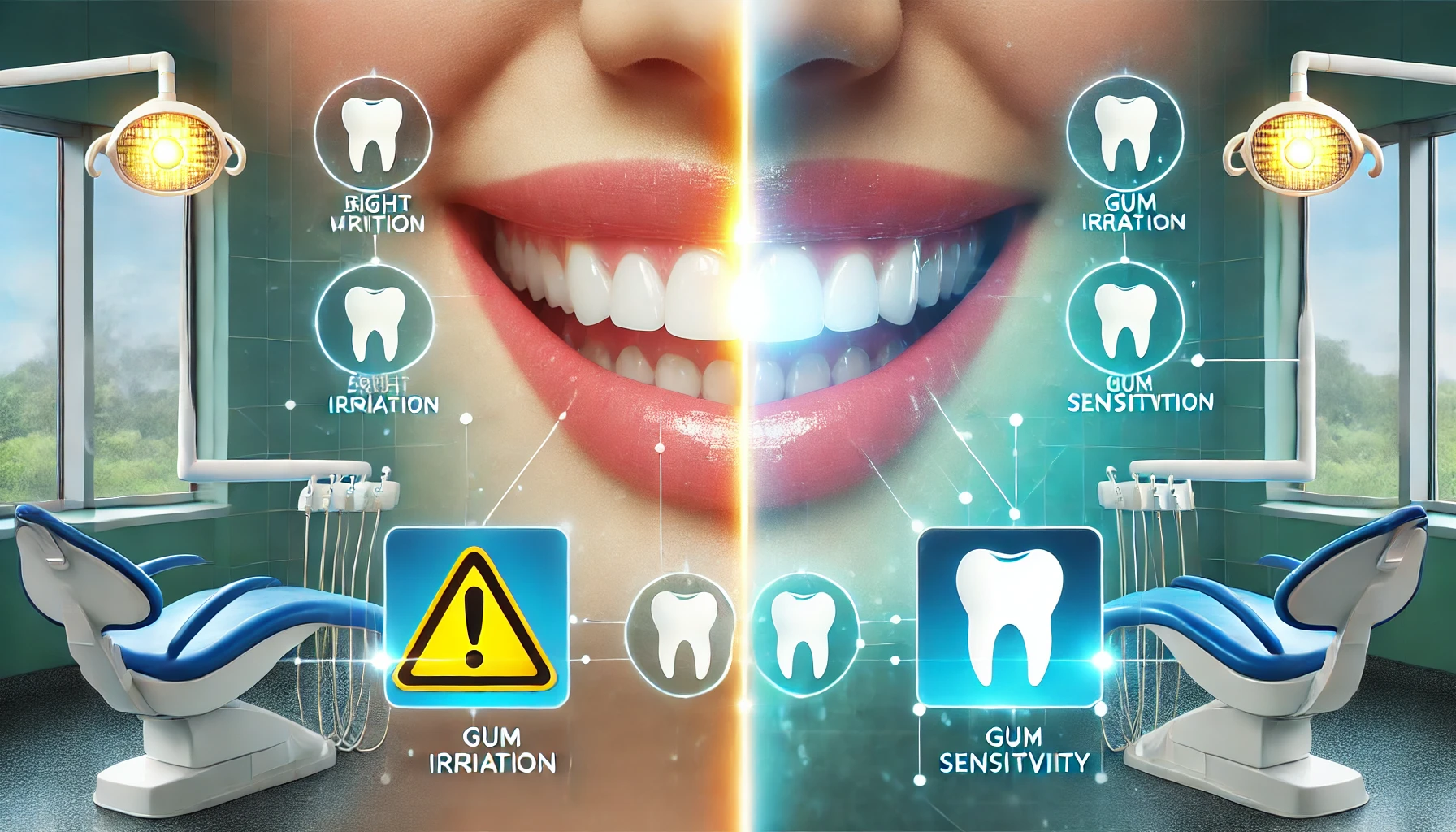
Teeth whitening can provide a range of benefits, such as an improved appearance of one’s smile and increased confidence.
However, it is also crucial to be aware of the potential risks and side effects associated with the process to ensure optimal dental health.
What Are the Benefits of Teeth Whitening?
The benefits of teeth whitening go beyond simply achieving a brighter smile; they include considerable enhancements in self-esteem and aesthetic appeal that many individuals pursue through effective dental care practices.
A radiant smile can be a powerful asset in both personal and professional settings, fostering positive interactions and leaving lasting impressions.
When individuals choose teeth whitening as part of their aesthetic dentistry routine, they often discover that this newfound brightness not only improves their appearance but also significantly boosts their overall confidence. This increase in self-assurance can lead to better social interactions, enhanced engagement during interviews or presentations, and a more approachable demeanour.
Consequently, the psychological benefits of having a dazzling smile can create a positive feedback loop, where an improved self-image translates into greater success across various aspects of life.
What Are the Risks and Side Effects of Teeth Whitening?
Teeth whitening can yield remarkable results, but it is important to acknowledge the potential risks and side effects that may occur, such as enamel erosion and increased tooth sensitivity. These issues can arise from improper usage or excessive exposure to whitening agents.
Often, these complications are linked to the misuse of over-the-counter products or not following the instructions given by a dentist. For those looking to achieve a brighter smile, it is vital to prioritise safety by choosing treatments that are professionally recommended and tailored to individual dental health.
Consulting with a dental professional can help identify any pre-existing conditions that might complicate the whitening process. They can also offer guidance on the most effective and safest methods available.
Additionally, employing protective measures—such as using desensitising toothpaste and strictly adhering to recommended application times—can help minimise discomfort during the whitening process.
Tips for Maintaining a Brighter Smile
Achieving and maintaining a brighter smile involves adhering to consistent oral hygiene practices and utilising specific dental care products that are designed to prevent stains and help preserve the results of teeth whitening treatments.
It’s important to understand that a regular routine can make a significant difference in the longevity of your smile’s brightness.
What Are Some Ways to Keep Teeth White?
To maintain white teeth, individuals can adopt a variety of effective strategies. Regular use of whitening toothpaste, good oral hygiene practices, and exploring natural whitening ingredients or home remedies are all beneficial approaches.
Additionally, making dietary changes can significantly impact tooth colour. For example, reducing the intake of staining foods like coffee, red wine, and berries while increasing the consumption of crunchy fruits and vegetables can help promote a brighter smile.
At-home care solutions, such as using bicarbonate of soda or activated charcoal, can provide a gentle polish to the enamel, gradually enhancing whiteness. It is also wise to consult with dental professionals for personalised recommendations that cater to specific dental conditions and goals, ensuring that any whitening regimen is both safe and effective.
How Often Should Someone Whiten Their Teeth?
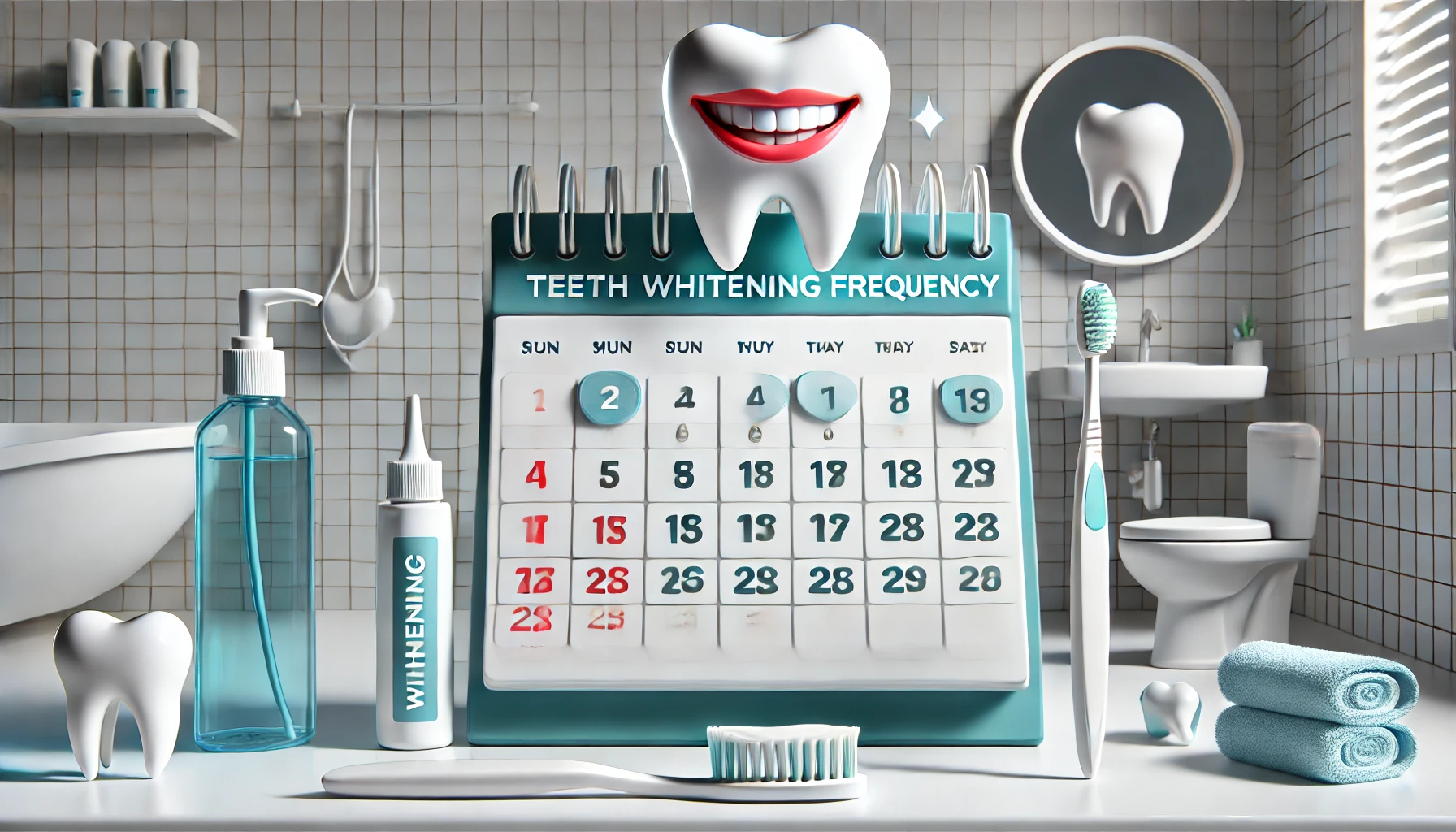
Determining how often one should whiten their teeth is influenced by several factors, including individual tooth sensitivity, the whitening method employed, and the recommendations provided by dental professionals who can offer personalised guidance.
Many individuals find themselves exploring a variety of options, from at-home whitening kits to in-clinic treatments, each of which may produce different results depending on how frequently they are used. Regular consultations with a dentist are essential, as they not only help establish an appropriate whitening schedule but also play a vital role in preventing possible damage to tooth enamel or irritation of the gums.
Patient experiences often highlight that those who adhere to professional guidelines tend to achieve more sustainable results, while individuals who overuse whitening products may encounter setbacks. Understanding the balance between maintaining a bright smile and caring for dental health is crucial for achieving lasting outcomes.
Frequently Asked Questions
What are some ancient methods of teeth whitening?
Ancient civilisations used a variety of methods to whiten their teeth, including rubbing them with charcoal, using twigs to brush with ash or bark, and even using urine as a whitening agent.
How did teeth whitening techniques evolve over time?
Over time, people experimented with different substances and methods to whiten their teeth. This led to the development of toothpastes, powders, and mouthwashes containing ingredients like salt, lemon juice, and baking soda.
When did modern teeth whitening technology first emerge?
The first peroxide-based teeth whitening products became available in the 1980s. These products were used by dentists and required in-office treatments, making them inaccessible to the general public.
What advancements have been made in modern teeth whitening technology?
Today, there are a variety of teeth whitening options available, including at-home kits and in-office treatments. These options use stronger and more effective concentrations of peroxide, making them more efficient at removing stains and whitening teeth.
Are there any risks associated with modern teeth whitening methods?
While teeth whitening is generally considered safe, some people may experience temporary tooth sensitivity or gum irritation. It is important to follow the instructions carefully and consult with a dentist if any issues arise.
What are some promising future developments in teeth whitening technology?
Researchers are currently exploring alternative whitening ingredients and methods, such as light-activated treatments and natural compounds like coconut oil. There is also a focus on developing products that are gentler on teeth and gums while still providing effective results.





